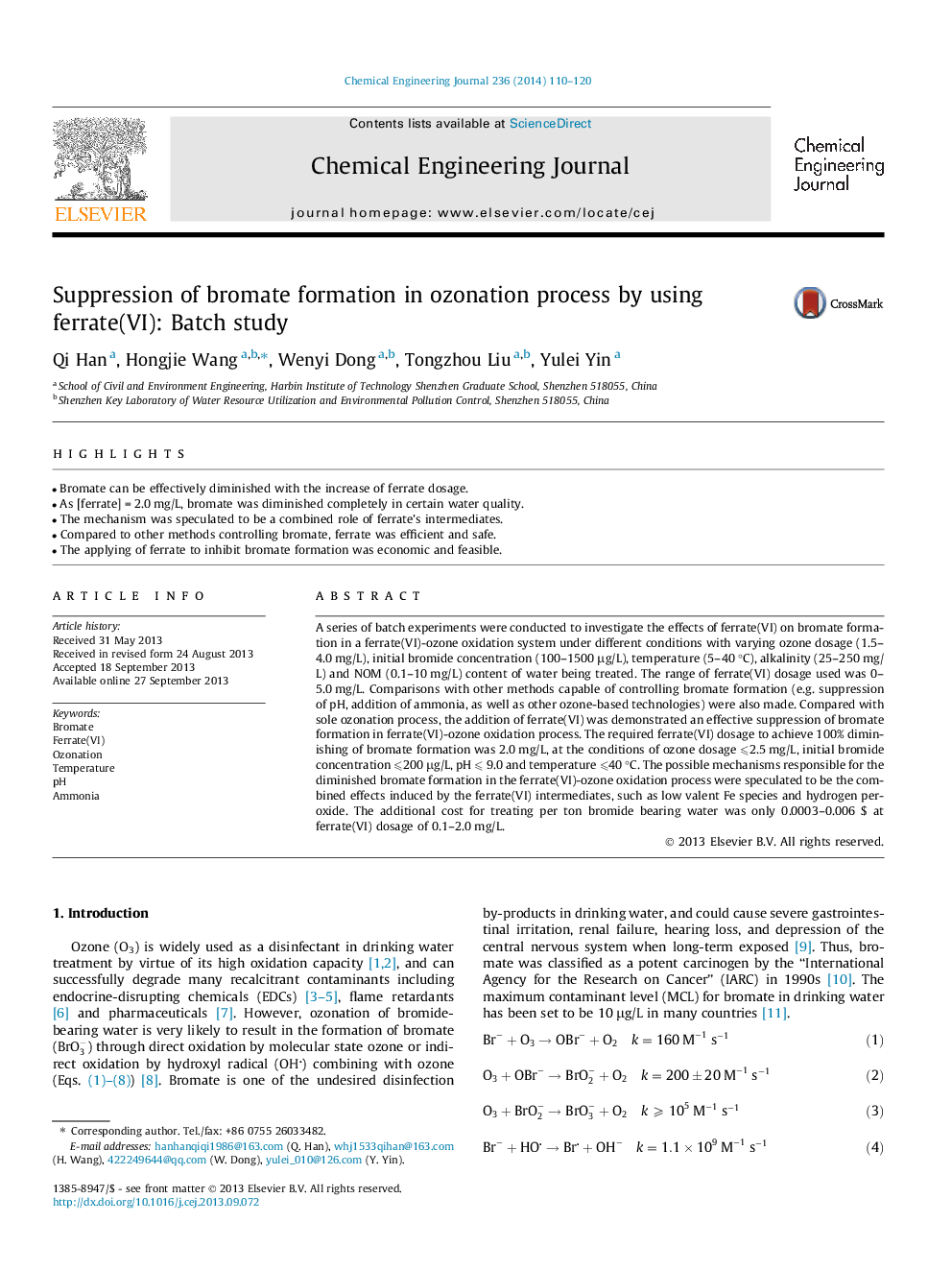| Article ID | Journal | Published Year | Pages | File Type |
|---|---|---|---|---|
| 147979 | Chemical Engineering Journal | 2014 | 11 Pages |
•Bromate can be effectively diminished with the increase of ferrate dosage.•As [ferrate] = 2.0 mg/L, bromate was diminished completely in certain water quality.•The mechanism was speculated to be a combined role of ferrate’s intermediates.•Compared to other methods controlling bromate, ferrate was efficient and safe.•The applying of ferrate to inhibit bromate formation was economic and feasible.
A series of batch experiments were conducted to investigate the effects of ferrate(VI) on bromate formation in a ferrate(VI)-ozone oxidation system under different conditions with varying ozone dosage (1.5–4.0 mg/L), initial bromide concentration (100–1500 μg/L), temperature (5–40 °C), alkalinity (25–250 mg/L) and NOM (0.1–10 mg/L) content of water being treated. The range of ferrate(VI) dosage used was 0–5.0 mg/L. Comparisons with other methods capable of controlling bromate formation (e.g. suppression of pH, addition of ammonia, as well as other ozone-based technologies) were also made. Compared with sole ozonation process, the addition of ferrate(VI) was demonstrated an effective suppression of bromate formation in ferrate(VI)-ozone oxidation process. The required ferrate(VI) dosage to achieve 100% diminishing of bromate formation was 2.0 mg/L, at the conditions of ozone dosage ⩽2.5 mg/L, initial bromide concentration ⩽200 μg/L, pH ⩽ 9.0 and temperature ⩽40 °C. The possible mechanisms responsible for the diminished bromate formation in the ferrate(VI)-ozone oxidation process were speculated to be the combined effects induced by the ferrate(VI) intermediates, such as low valent Fe species and hydrogen peroxide. The additional cost for treating per ton bromide bearing water was only 0.0003–0.006 $ at ferrate(VI) dosage of 0.1–2.0 mg/L.
